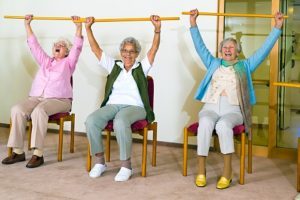 Osteoarthritis is one of the most common forms of arthritis. It can limit joint motion while causing pain and swelling. See the articles below to learn how chair yoga can help ease the pain caused by osteoarthritis and to find some tips on relieving knee pain. Also, discover the cause and warning signs of cervical osteoarthritis, a form of neck arthritis also known as cervical spondylosis, and how high cholesterol affects your chances of suffering from the disease.
Osteoarthritis is one of the most common forms of arthritis. It can limit joint motion while causing pain and swelling. See the articles below to learn how chair yoga can help ease the pain caused by osteoarthritis and to find some tips on relieving knee pain. Also, discover the cause and warning signs of cervical osteoarthritis, a form of neck arthritis also known as cervical spondylosis, and how high cholesterol affects your chances of suffering from the disease.
Osteoarthritis pain in older adults can be managed with chair yoga
Osteoarthritis pain in older adults can be managed with chair yoga. The researchers randomly assigned 131 older adults to either chair yoga or a health education program. Both interventions took place twice a week for 45 minutes a session over the course of eight weeks.
Advertisement
Measurements for pain, pain interference, balance, gait speed, fatigue, and functional ability were taken at baseline, mid-intervention, end of intervention, as well as one and three months post-intervention.
The researchers found that those who took part in the chair yoga showed a greater reduction in pain interference and continued experiencing these benefits for three months. Pain, fatigue, and gait speed were also improved, but those improvements did not last after the intervention was completed. There was no difference in balance measurements between the two groups. Continue reading…
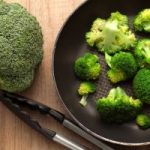 Broccoli and osteoarthritis: Could the superfood fight against arthritis?
Broccoli and osteoarthritis: Could the superfood fight against arthritis?
“A broccoli serving a day will keep osteoarthritis away.” This may seem like a far-fetched statement, and truth be told, it is a bit of an exaggeration, but there is mounting evidence that there’s some truth behind it.
Considering the fact that there is no known cure for osteoarthritis, and that broccoli is readily accessible and easy to incorporate into your diet, not to mention highly nutritious, there really is no reason not to start consuming it regularly. Continue reading…
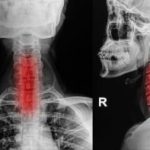 Cervical spondylosis (cervical osteoarthritis) or neck arthritis: Causes, symptoms, and treatment
Cervical spondylosis (cervical osteoarthritis) or neck arthritis: Causes, symptoms, and treatment
Cervical spondylosis, also known as cervical osteoarthritis or neck arthritis, can be a painful and debilitating condition, but with proper care and treatment, many people who suffer from it can lead normal lives.
Cervical spondylosis is common as people age. You don’t hear the term a lot because most people refer to it as either cervical osteoarthritis or neck arthritis. The condition impacts more than 85 percent of people over the age of 60. Some people have a mild case and experience few to no symptoms at all, while others have chronic, severe pain and stiffness. The condition is essentially one that affects the joints and discs in the neck. Continue reading…
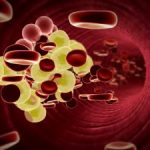 High cholesterol may lead to osteoarthritis by causing cartilage cells to die: Study
High cholesterol may lead to osteoarthritis by causing cartilage cells to die: Study
High cholesterol may lead to osteoarthritis by causing cartilage cells to die. Researcher Indira Prasadam said, “Our team has already begun working alongside dietitians to try to educate the public about healthy eating and how to keep cholesterol levels at a manageable level that won’t damage joints, in collaboration with orthopedic surgeons based at Prince Charles Hospital, Brisbane, Australia.”
Advertisement
The researchers used two different animal models to mimic high cholesterol as seen in humans. The first was a mouse model with the altered gene ApoE-/- which leads to high cholesterol. The second was a rat model on a high-cholesterol diet which contributed to high cholesterol. Continue reading…
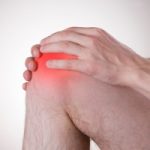 Osteoarthritis knee pain relief at home: Easy tips and natural remedies
Osteoarthritis knee pain relief at home: Easy tips and natural remedies
Osteoarthritis knee pain relief at home can be achieved through natural remedies directed at easing the knee pain. Osteoarthritis is a type of arthritis caused by wear and tear. Over time, the cartilage that cushions the bones of the joint wears thin, causing bone-on-bone friction. This is what causes the pain experienced in osteoarthritis.
When cartilage gets damaged or destroyed, it cannot repair itself, so it’s important to partake in preventative measures to minimize the wear and tear of the cartilage.
Factors that increase a person’s risk for osteoarthritis knee pain include older age, heredity, being a female, repetitive stress on the joints, athletics, and other illnesses like rheumatoid arthritis and metabolic disorders. Continue reading…
